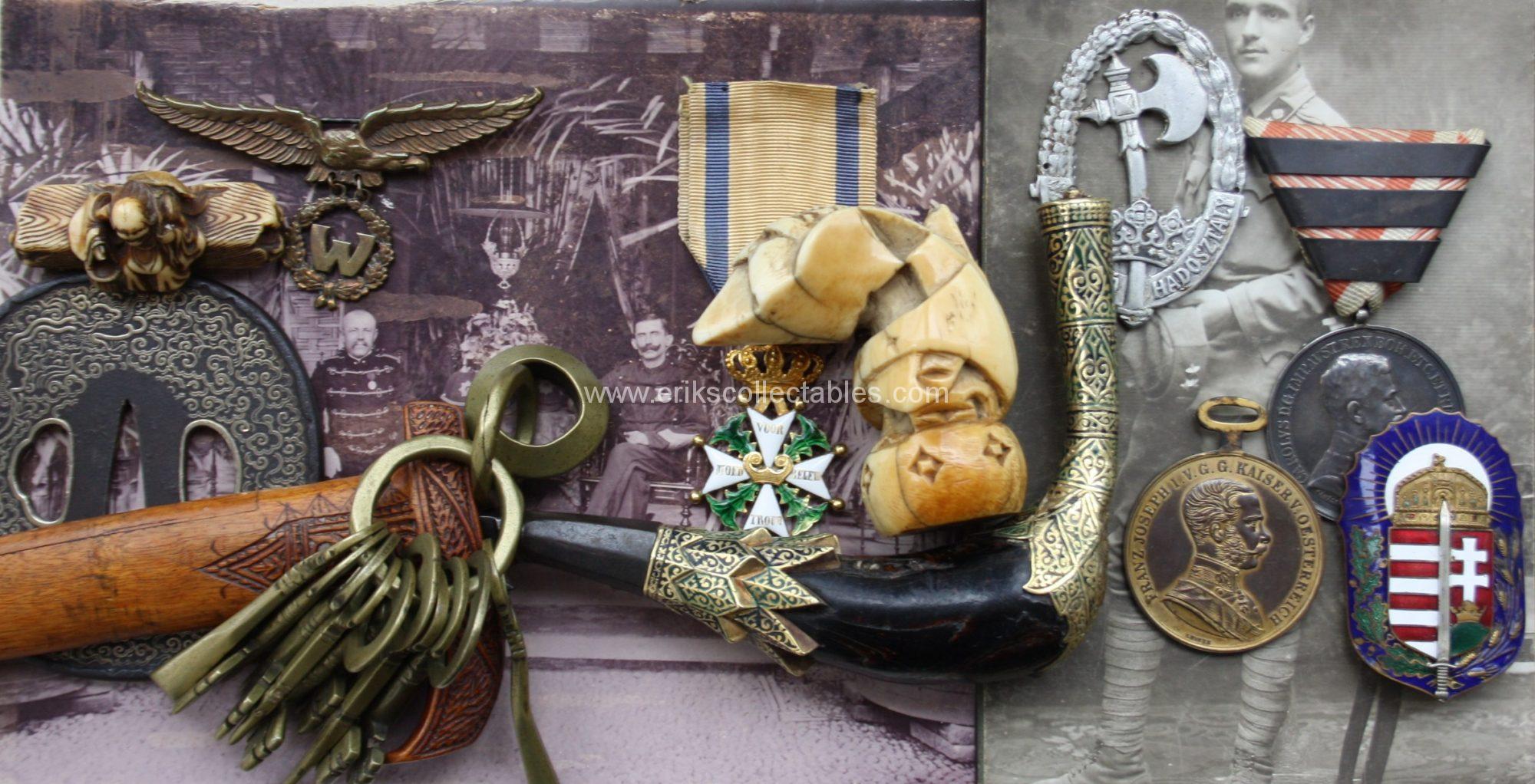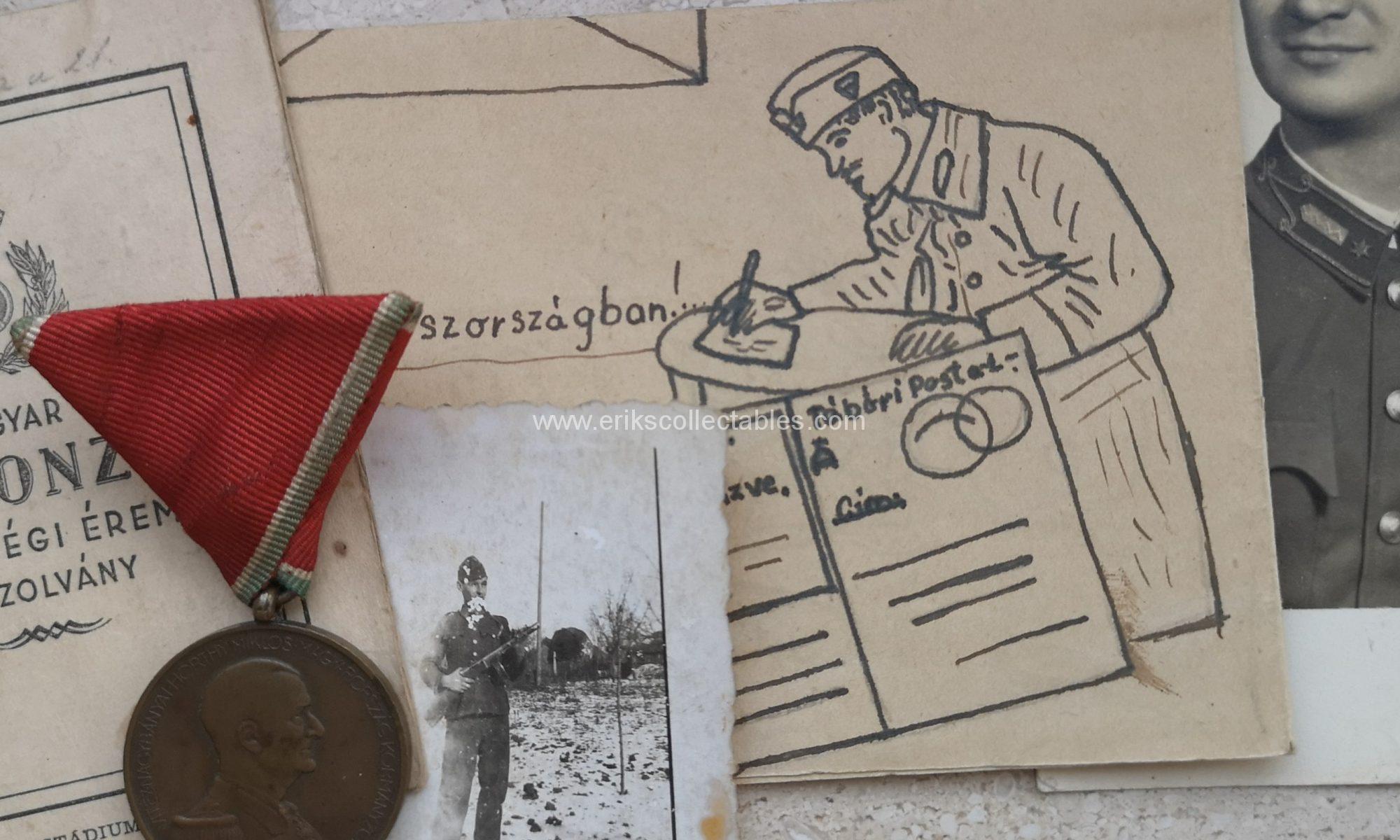Both the medal and the regulations are a copy of the Austro-Hungarian bravery medal in WW1 as I described in my earlier blog. The medal consists of 4 grades, Bronze, Small Silver (or second class silver), Large Silver (first class silver) and Gold.

The medal was aimed at ranks below officer but the Gold grade could also be awarded to officers who would receive a special device to the ribbon. Officers in training could be awarded all grades of the medal untill they would get commissioned.

Officer in training with Small Silver and Bronze grade 
Border Guard nco with Large Silver grade
The Bronze and Small Silver grade had the same size of 35mm and the Large Silver and Gold grade both measure 40mm. For the silver grades I have so far found three materials – real hallmarked silver, silvered bronze which also has the word BRONZ impressed on the rim and the war metal version without any markings.
It seems the silvered bronze version had a regular problem with the eyelet as I have seen several examples where it came off and I have seen several more on the market. These all seem to be the version with BRONZ stamped in the rim.
So far I have not handled a gold one personally but as far as I understand both hallmarked gold and a gilded bronze versions exist, only 60 were awarded in total so be aware the chances of finding a real one are minimal.

Below several variations in war metal and silvered bronze of the 2nd class silver.

The front bears the bust of Regent Horthy Miklós. The reverse shows the national symbol of Hungary with crossed swords behind and the word VITÉZSÉGÉRT – bravery.

The ribbon is the standard triangular form and could have two types of devices. A bar for repeat awards (up to three bars!) and a golden device for the officers Golden medal (extremely rare, only 21 examples!).
The award paper is basically the same for all grades with the different grade being mentioned. Below a Bronz and Small Silver example.


Above the inside of the booklet for the small silver bravery medal. It was awarded posthumously as was the case with a relative large number. More than 3000 awardees (of the 8193) did not survive the war. A book about all decorated fallen Hungarians during WW2 states he was killed by a headshot in 1944 in the location Dubowy.


The large silver grade has become quite rare and is sought after. Several versions exist as already discussed above can be seen below.

Compiled from the same website a quick overview of the amounts awarded per year. It seems many men who died in combat also received the bronze or silver 2nd class medal posthumously.
| 1939 | 1940 | 1941 | 1942 | 1943 | 1944 | Total | |
| Bronze | 244 | 0 | 1721 | 2299 | 15541 | 6037 | 25842 |
| Small Silver | 193 | 1 | 722 | 1725 | 4060 | 1492 | 8193 |
| Large Silver | 129 | 2 | 263 | 453 | 546 | 278 | 1671 |
| Gold | 39 | ||||||
| Officers Gold | 21 |



Collectors be aware fakes also exist and these can be very deceiving. As far as I know they only exist in bronze and a silvered version of this (so both the same 35mm size using one mold). Here you can see some details regarding the fake version.






